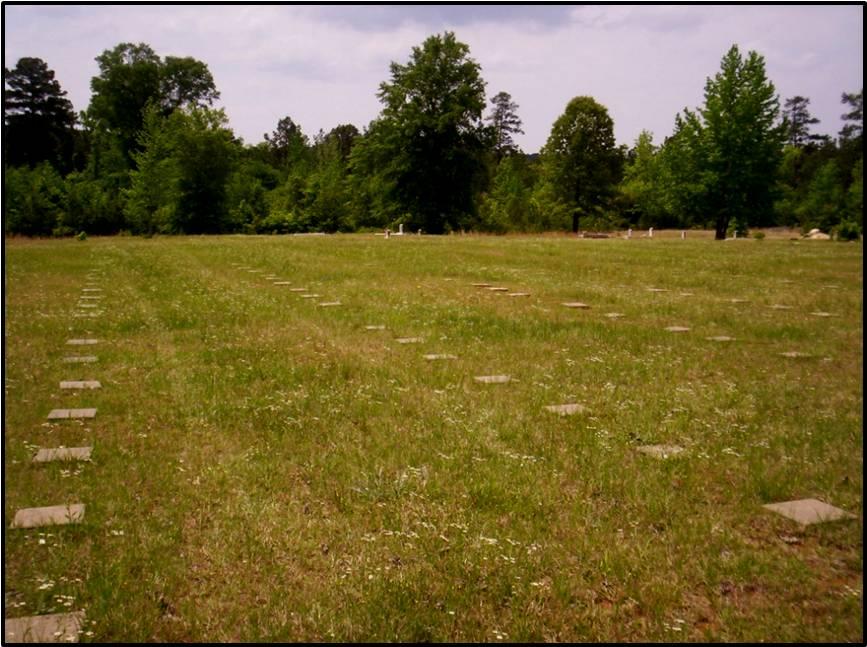By Rolonda Teal
.JPG) The Sabine River which separates portions of Texas from Louisiana dates to pre-historic times when it was part of the Caddo Indian homelands. In the early nineteenth century, the river was part of Spanish territory but by the time of the Civil War it was part of American waters used by both Union and Confederate soldiers. From the period 1961-1969 the Sabine River became part of the Toledo Bend Dam Project (TBDP).
The Sabine River which separates portions of Texas from Louisiana dates to pre-historic times when it was part of the Caddo Indian homelands. In the early nineteenth century, the river was part of Spanish territory but by the time of the Civil War it was part of American waters used by both Union and Confederate soldiers. From the period 1961-1969 the Sabine River became part of the Toledo Bend Dam Project (TBDP).The ideology behind the Toledo Bend Dam Project was to create a water supply for regional residents from Texas and Louisiana through hydroelectric power generation and to create a recreational space. By the time the dam was completed it represented the largest man-made body of water in the South, which implies that a lot of land was needed in order to create this massive water space.
Two communities that provided some of the needed land were Ebarb and Pine Flat. The Ebarb community is primarily home to peoples of Spanish and Native American descendent (Choctaw Apache). One resident, Kenneth Garcie, spoke of a time when he could sometimes walk across the river during summer months. This community and surrounding area had been occupied by his ancestors since the 1700's.
.JPG)
Folks who lived along the Sabine River referred to it as "the bottoms". Yet, there were distinct surnames associated with those bottom communities according to Ms. Mary Rivers. For example, there were:
1. The "Cross the Creek Branch" who lived northwest of Zwolle towards Noble and Converse. Community Surnames: Manshack, Malmay, Procell, Paddie
2. The "River Bottom People" who inhabited the bottomlands near Ebarb.
Community Surnames: Rivers, Ezernacks, Bisons, Malmay, Procell, Sepulvado
3. The "Creek Bottom People" who were identified as racially mixed with Indian and European ancestry.
Another community affected by the Toledo Bend Dam Project, Pine Flat, was located about 25 miles south of Ebarb. Mrs. Alma Cross stated that while growing up in Pine Flat she, "didn't know what black and white was. We were all just family down there. We ate at the same table, slept in the same beds, and sometimes ate out of the same plate".
Just like in Ebarb, Pine Flat also had distinct communities and surnames associated with them. For example there were the Bar Lake and Richard Neck communities whose surnames included: Gasaway, Grace, Neck, Cross, Sweet, Stallsworth, Fobbs, and Hines. Although these residents were mostly African American other cultural groups also lived among them. Mrs. Cross described her own ancestry to illustrate the diversity of some bottom land residents. She stated that her Grandmother Lula Fobbs had Blackfoot, Choctaw, African, and Irish ancestry. These bottom communities were comprised of people who depended on one another for social and economic support without much regard to ethnic affiliation.
When the TBDP came to fruition it not only meant a removal of residents from places like Ebarb and Pine Flat, it also meant a loss of cultural traditions. For example, Macedonian United Methodist Church associated with the Pine Flat community history dates to 1841. Soon after TBDP was in place, the church broke up and split to form two separate ones. Over a hundred years of history, association with place and solidarity was destroyed with the building of the dam.
Community cemeteries from Ebarb to Pine Flat and beyond were relocated and the deceased buried in different locations. The new community cemetery for former Pine Flat residents is currently located behind Macedonia Church. At the entrance of the cemetery is a marker dedicated by the River Authorities from Texas and Louisiana in remembrance of those who bodies were not discovered during the relocation process and thus would have been submerged by water. In the end, over a hundred graves were relocated from this site alone.

Figure 2: Grave markers of relocated Pine Flat and Richard Neck community residents.
While it is understood that the River Authorities can never go back and undo what's already been done, there are certain responsibilities that state and local officials should have to the descendants of those various communities. Yes, there was some compensation given to the former residents such as providing housing and a percentage of money given toward approximate property value. However, there are some things that can not be compensated for such as a loss of traditional cultural lands and rituals.
At this point more research that documents the outcome of those displaced community members is needed. Possible research questions could include: What economic hardships, if any, did they experience? What traditional customs/rituals have been altered or lost? Have the descendants made any economic gains from recreational tourism along the Sabine River? In addition to more research it would also be nice to see an exhibit, signage, or website located in Sabine Parish that acknowledges this historic alteration of the Sabine River bottoms and its effects on the people who once called them home. After all, it would seem difficult to talk about the Toledo Bend Dam Project and not talk about the people that were displaced so that it could become a reality. It would be akin to talking about plantations without talking about the slaves.